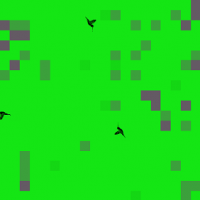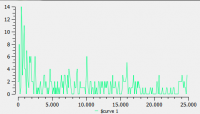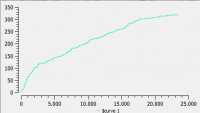Table of Contents
BUG HUNT CAMOUFLAGE
- Compressed source code: bughuntcode
- TerraME version: 1.3.0
- Seminar presentation : presentation
AUTHORS: Jesus Castellote & Sergi Soler
WHAT IS IT?
Bug hunt camouflage it is a model created in the terrame environment for lua programming language. This model pretends to simulate the evolution of a bug or any kind of prey by getting its skin or cover looks like the environment it lives in. After some time the offsprings of the bugs are more and more similar to the environment, so that, the bird predator looking for the bugs cannot distinguish them sometimes , even sharing the same space. The model pretends to represent natural selection, by giving the two agents different behavior and looking at the result of it along the time. Also, how many time takes to hunt preys depending the number of predators and the area of the environment.
HOW IT WORKS
The model is composed of two main actors/agents which are preys(bugs) and predators (birds), a bird looks for a bug and hunt it.
The rules and assumptions for the model are the followings:
- 1. There number of preys and predator remains invariable in time regardless the hunting.
- 2. The bird looks for the prey randomly, whith no defined path, and cell by cell with only vision of one cell.
- 3. The prey doesn't move anywhere until gets hunted. Once hunted a offspring of this prey is born somewhere ramdomly.
- 4. When some number of preys have been hunted (hunted1 parameter) they evolve and make their green cover component(green pigment gene) more similar to the environment, so the probability of be seen by the predator gets reduced. The prey can evolve until 2 times
HOW TO USE IT
The different parameters of the model allow to change the behavior of it. You can experiment or/and play with them and observe the sensitivity of the model to them. For our model the paramaters the user can define are (with the default values):
- Evolution 1 number = 50 . Defines the number of prays hunted until they get evoluted with similar colour to the enviroment.
- Evolution 2 number = 150 . The same as before but for the second evolution.
- Get hunted 1 parameter = 0,5. Probability from 0 to 1 for the first evolution to get hunted.
- Get hunted 2 parameter = 0,1. The same as befor but for the second evolution.
Varing this parameter you will note changes in the time of a predator (bird) spend in hunting a prey (bug).
When the model is running you will see two graphs. The amount of preys in time remains invarible because the model does not take this into account, a map of the cellular space will be displayed too. Here you can observe the performing of the two agents in a enviroment.
THINGS TO NOTICE
If you observe the chart of the model, which is notifying the number of hunted preys along the time you will notice that each time the same amount of predators (3) are hunting less and less because of the evolution of the preys.
THINGS TO TRY
This section could give some ideas of things for the user to try to do with the model. For example:
- Modify the number of preys or predators.
- Change the area of the environment.
- Try to comment line 31 in the source code.
- Try to vary the probability of get hunted for each evolution. From 0 to 1
EXTENDING THE MODEL
If we had more time to spend at developing the model, the next step would be to add some behaviour and rules in the reproducing of the agents. One example of this would be for example, the predator agent reproducing themself after they eat some number of preys. Also the preys could reproduces itself if it has survived some concrete amount of time. Then the model will be more realistic.
TerraME FEATURES
In this model six parameters can be changed to analize it. Widht and Height for the area displayed. The number of preys and predators. When the evolution happens (how many preys must be hunted to this happens). Probability of every evolution to be hunted.
A cellular space is used to show the map, and two agents to represent preys and predators.
Also two graphs are displayed to see how evolves the model.
RELATED MODELS
To build this model we have had a close look at the descprition of a similar model made in NetLogo which is called Bug Hunt Camouflage, you can visit the site here
CREDITS AND REFERENCES
Bug Hunt Camouflage Netlogo model: http://ccl.northwestern.edu/netlogo/models/BugHuntCamouflage
Terrame project site: http://www.terrame.org/doku.php
Material from the enviromental modelling cours, terralab, model examples code, slides, books and papers.




